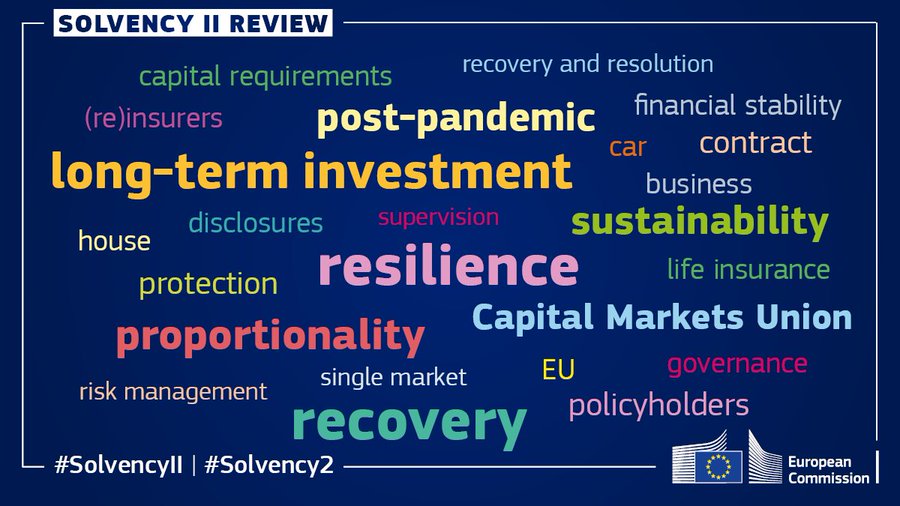Solvency II review

Related topics
Solvency IIdate: 29/10/2021
In application since 2016, Solvency II has provided a solid base for the single market in insurance, letting insurance companies operate across the EU and protecting consumers and businesses. With its review package proposed on 22 September 2021, the European Commission hopes to make the insurance sector more resilient and better able to contribute to the EU’s broader political objectives.
Why was a review needed?
Insurers and reinsurers are essential in the daily life of Europeans because they provide cover for certain risks and help people build up savings, which are in turn channelled into the real economy. In this way, at the end of 2020, insurers and reinsurers in the EU had reserved more than €7 trillion to be able to pay for expected future claims and held assets worth more than €10 trillion, making the sector one of the largest among institutional investors. Therefore, it is essential that the legislation in place remains fit for purpose. This is why the Solvency II directive requires the Commission to carry out a review. Beyond the legal obligation, the review offers the opportunity to reflect more broadly on the lessons learned from any ‘teething problems’ – especially during the COVID-crisis – and to align the rules more closely to the political objectives of the Capital Markets Union and the European Green Deal.
Key points of the review
The overall objective of the review is to balance better protection for consumers with ensuring that insurance companies remain solid, even in challenging economic times. More specifically, the proposed measures aim to
- improve the framework’s risk sensitivity, notably in relation to unprecedented low interest rates and climate risks
- enhance proportionality
- strengthen cooperation between supervisors
- incentivise insurers to invest more in long-term capital for the economy
The Commission expects that the package could release up to €30 billion of capital in the long term at EU level. This would mean that insurers could increase their contribution to the funding of the EU Green Deal and Europe’s recovery from the pandemic.
Recovery and resolution
Insurance failures are rare, but when they are disorderly or not well managed they can have a significant impact on policyholders, beneficiaries, injured parties or businesses, who may find they do not receive the insurance money to which they are entitled. As (re)insurers are also present in the financial markets, their failure can lead to or amplify financial instability. There are currently no harmonised procedures at European level for addressing such situations. This means there are considerable differences between what Member States’ authorities can do for policyholders, which in turn hinders cross-border cooperation.
To address these issues, the Commission has proposed a new EU recovery and resolution framework. The key objective of the proposal is to ensure the continuity of insurance protection where this is in the interest of the people and businesses insured, while protecting taxpayers and the financial system. The new framework will provide national authorities with a uniform toolkit to make them better-prepared for crises and allow them to intervene sufficiently early and quickly when faced with distressed (re)insurers, including across borders. Moreover, it will facilitate cooperation among authorities from different Member States and provide for a uniform treatment of non-EU (re)insurers active in the EU.
